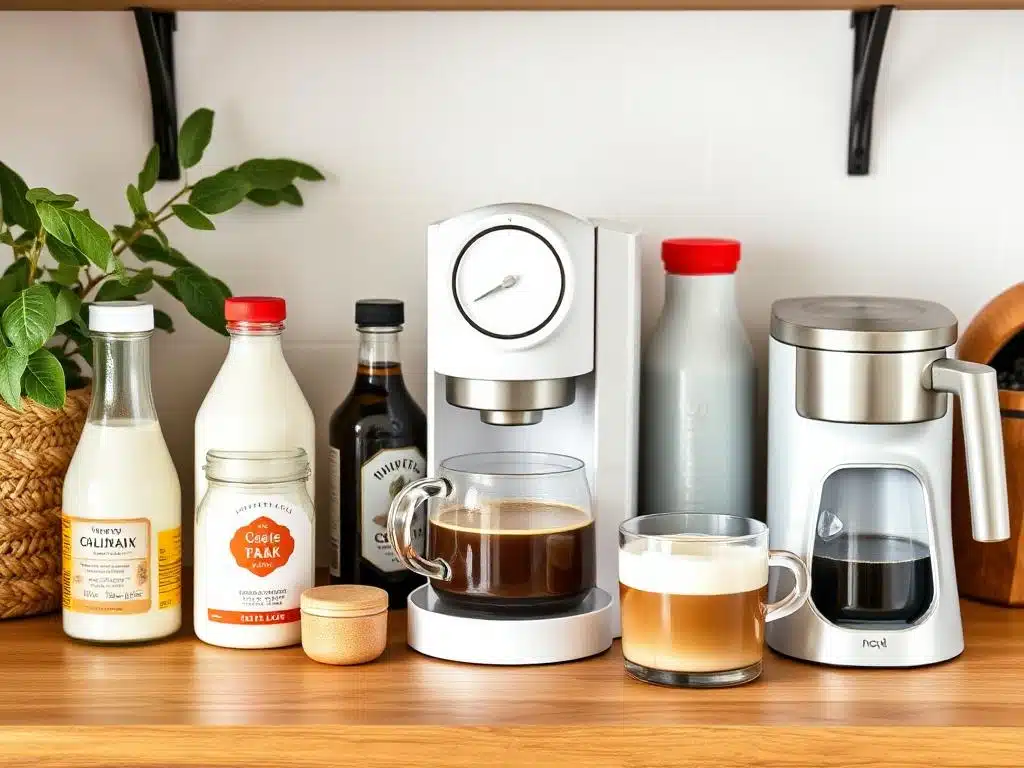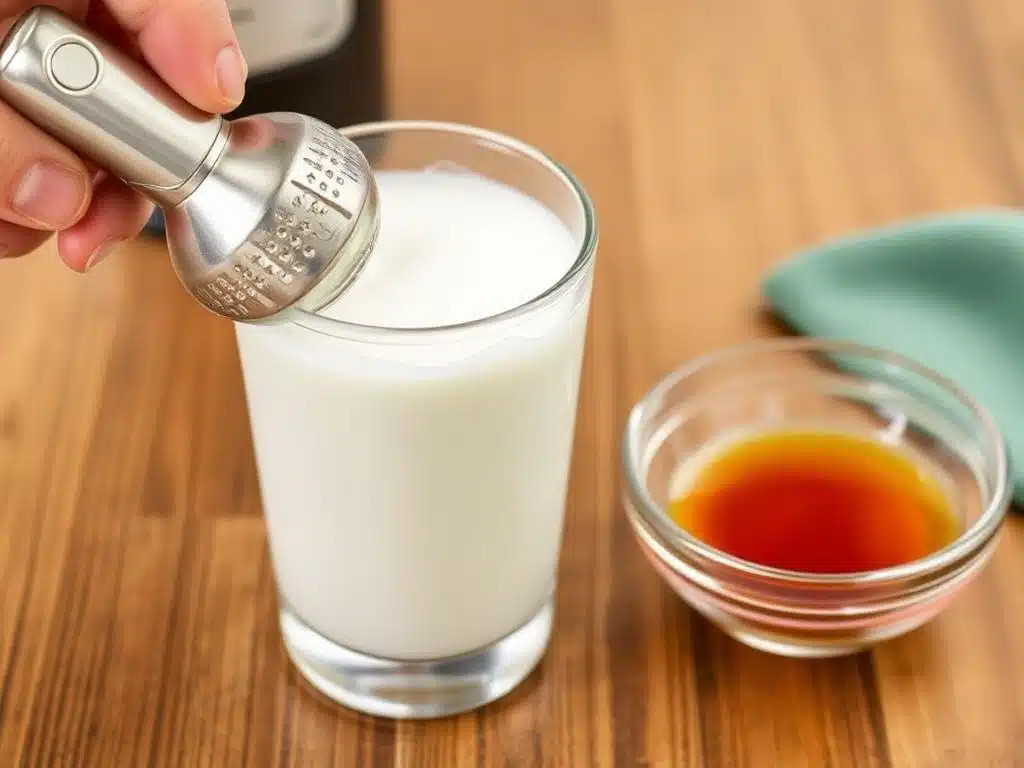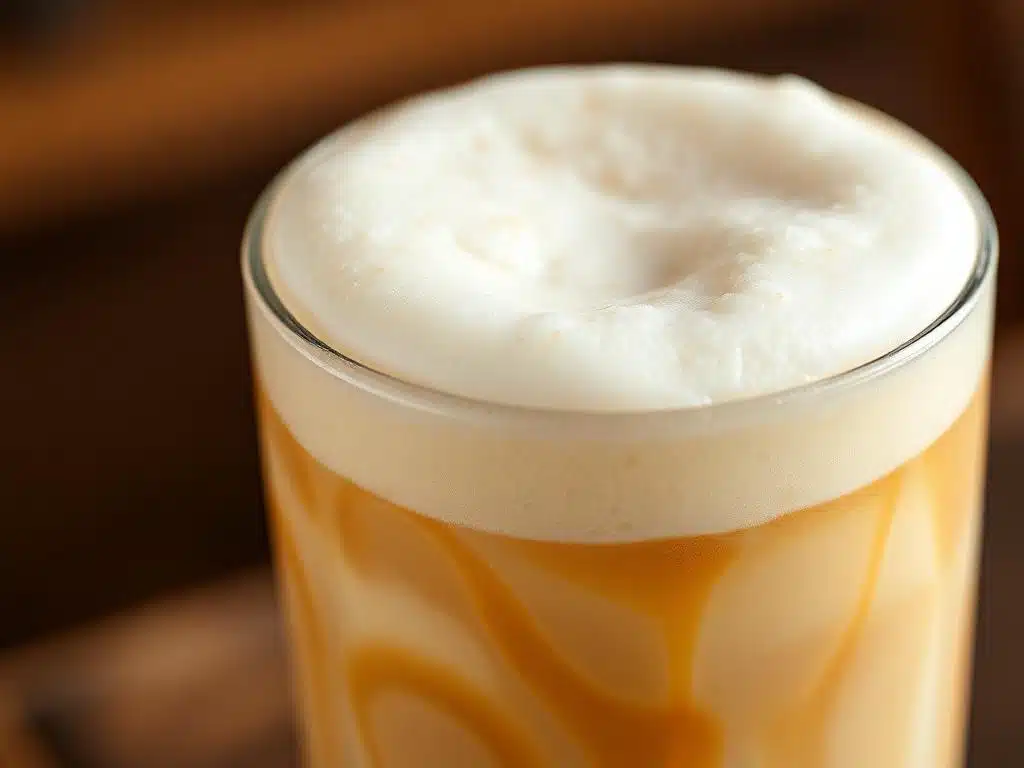Cold foam has taken the coffee world by storm, transforming your average cup of joe into a frothy delight. Whether you’re sipping on a cold brew or a refreshing iced latte, the right milk can elevate your drink to new heights. But with so many options available, you might be wondering: What milk is best for cold foam? In this article, we’ll explore the ins and outs of cold foam, the types of milk that work best, and how to achieve that perfect frothy texture. So, grab your frother, and let’s dive in!
Introduction
Overview of Cold Foam
Cold foam is a creamy, airy topping that adds a delightful texture to your favorite iced beverages. Unlike whipped cream, which is rich and heavy, cold foam is light and fluffy, making it the perfect complement to cold drinks. You might have seen it at your local coffee shop, often sitting atop a delicious iced coffee or a flavored cold brew. It’s not just about aesthetics; cold foam enhances the overall drinking experience, providing a smooth mouthfeel and a touch of sweetness.
Importance of Milk Choice
When it comes to creating the best cold foam, the type of milk you choose plays a crucial role. Different milks have varying fat contents, proteins, and flavors, all of which can affect how well they froth and the taste of your drink. For instance, whole milk creates a rich, creamy foam, while skim milk offers a lighter option. Non-dairy alternatives, like almond or oat milk, have become increasingly popular, but do they froth as well as traditional dairy?
Understanding Cold Foam
What is Cold Foam?
So, what exactly is cold foam? In simple terms, cold foam is a frothy topping made from milk that’s been aerated to create a light, creamy texture. It’s typically used in iced coffee drinks, providing a delightful contrast to the cold beverage beneath. Unlike whipped cream, which is thick and rich, cold foam is designed to be airy and light, allowing it to float on top of your drink without overwhelming it.
Cold foam is often flavored, too! You might find it infused with vanilla, caramel, or even seasonal spices, adding an extra layer of flavor to your iced coffee. It’s a versatile addition that can elevate your drink, making it not just a beverage but an experience.
The Science Behind Cold Foam
Now, let’s dive into the science behind cold foam. The key to achieving that perfect frothy texture lies in the milk’s composition. When you froth milk, you’re introducing air into it, which creates tiny bubbles. The proteins in the milk stabilize these bubbles, allowing them to hold their shape and create that delightful foam.
The fat content of the milk plays a significant role in this process. Whole milk, for instance, has a higher fat content, which contributes to a creamier texture. On the other hand, skim milk has less fat, resulting in a lighter foam. However, it’s important to note that while skim milk may froth well, it might not provide the same rich flavor as whole milk.
Temperature also matters! Cold foam is typically made with cold milk, which helps maintain its airy texture. If the milk is too warm, it can lose its ability to froth properly. So, if you want to create the best cold foam, keep your milk chilled and use the right frothing technique.
Types of Milk for Cold Foam

When it comes to making cold foam, the type of milk you choose can make all the difference. Each milk variety has its unique characteristics that affect frothing ability, flavor, and texture. Let’s break down the most popular options, starting with dairy milk.
1.Dairy Milk
Dairy milk is a classic choice for cold foam, and it comes in several varieties. Here’s a closer look at the most common types:
Whole Milk
Whole milk is often considered the gold standard for cold foam. With a fat content of about 3.25%, it creates a rich, creamy texture that froths beautifully. The higher fat content helps stabilize the foam, allowing it to hold its shape longer. This makes whole milk an excellent choice if you’re looking for a luxurious mouthfeel in your iced coffee.
However, keep in mind that while whole milk provides a delightful creaminess, it can also add a bit of richness to your drink. If you prefer a lighter option, you might want to explore other types of milk.
2% Milk
2% milk strikes a balance between creaminess and lightness. With a fat content of around 2%, it froths well and still offers a decent amount of creaminess without being overly rich. This makes it a popular choice for those who want a bit of indulgence without going all out with whole milk.
If you’re looking for a versatile option that works well in various drinks, 2% milk is a solid choice for cold foam.
Skim Milk
Skim milk, with its minimal fat content, is the lightest option among dairy milks. While it can froth quite well, the resulting foam is less creamy compared to whole or 2% milk. If you’re watching your calorie intake or prefer a lighter drink, skim milk might be the way to go.
However, be aware that the flavor may not be as rich, and the foam might not hold up as long. If you choose skim milk, consider adding a flavored syrup to enhance the taste of your recipe.
2.Non-Dairy Milk
Non-dairy milk alternatives have gained popularity in recent years, especially among those with dietary restrictions or preferences. Let’s explore some of the most common non-dairy options:
Almond Milk
Almond milk is a popular choice for those seeking a dairy-free option. It has a slightly nutty flavor and a thinner consistency compared to dairy milk. While it can froth, the foam may not be as stable or creamy as that made with whole milk. However, if you enjoy the taste of almonds, it can add a unique twist to your recipe.
Oat Milk
Oat milk has quickly become a favorite among coffee enthusiasts. Its creamy texture and naturally sweet flavor make it an excellent choice. Oat milk froths well, creating a stable foam that holds up nicely on top of your iced drinks. Plus, it’s a great option for those with nut allergies!
Soy Milk
Soy milk is another popular non-dairy alternative. It has a thicker consistency and a slightly bean-like flavor. When it comes to frothing, soy milk can produce a decent foam, but the flavor may not appeal to everyone. If you enjoy the taste of soy, it can be a good option.
Coconut milk offers a tropical twist to your cold foam. It has a rich, creamy texture, but the flavor can be quite strong. If you love coconut, this could be a fun choice! However, keep in mind that not all coconut milk froths equally. Look for barista blends specifically designed for frothing to achieve the best results.
3.Comparison of Dairy and Non-Dairy Milk
When comparing dairy and non-dairy milk for cold foam, it’s essential to consider frothing ability, flavor, and texture. Dairy milk, especially whole milk, tends to create a creamier and more stable foam. Non-dairy options like oat milk, however, can also produce excellent results, particularly if you choose the right brand.
Ultimately, the best milk for your recipe depends on your personal preferences and dietary needs. Experimenting with different types can lead to delightful discoveries, so don’t hesitate to try out various options!
Best Practices for Frothing Milk

Creating the perfect cold foam isn’t just about the type of milk you use; it’s also about how you froth it. With the right equipment and techniques, you can achieve that light, airy texture that makes this recipe so delightful. Let’s explore the best practices for frothing milk to perfection.
Equipment Needed
To get started, you’ll need some essential equipment. Here are a few options to consider:
- Milk Frother: A handheld or electric milk frother is a popular choice for making cold foam. These devices are designed to introduce air into the milk, creating a frothy texture quickly and easily.
- Steam Wand: If you have an espresso machine, it likely comes with a steam wand. This tool can also be used to froth milk for cold foam, although it’s typically used for hot milk. With a bit of practice, you can master the technique for cold frothing.
- French Press: Believe it or not, a French press can double as a frother! Simply add cold milk to the press, pump the plunger up and down, and watch as the milk froths up.
- Jar and Lid: If you don’t have any specialized equipment, you can use a jar with a lid. Fill the jar with cold milk, secure the lid, and shake vigorously until frothy. This method may take a bit longer, but it’s a great option for those just starting out.
Techniques for Frothing Milk
Now that you have your equipment ready, let’s dive into the techniques for frothing milk for this recipe:
- Chill Your Milk: Start with cold milk straight from the fridge. The colder the milk, the better it will froth. If you’re using a steam wand, make sure to keep the milk cold throughout the process.
- Pour the Milk: Pour your chosen milk into your frothing device, filling it about halfway. This allows room for the milk to expand as it froths.
- Frothing Method:
- Handheld Frother: Turn on the frother and immerse it just below the surface of the milk. Move it in a circular motion to incorporate air. Continue frothing until you achieve the desired foam consistency.
- Steam Wand: If using a steam wand, position it just below the surface of the milk and turn it on. Move the wand around to create a whirlpool effect, which helps incorporate air. Be careful not to heat the milk too much; you want it cold!
- French Press: Pump the plunger up and down vigorously for about 30 seconds. This will introduce air into the milk and create a frothy texture.
- Check the Foam: Once you’ve achieved the desired frothiness, stop frothing. The foam should be light and airy, with a velvety texture. If it’s too thick or dense, you may have over-frothed it.
Tips for Achieving the Perfect Cold Foam
To ensure your recipe turns out perfectly every time, keep these tips in mind:
- Experiment with Milk Types: As we discussed earlier, different types of milk froth differently. Don’t hesitate to try various options to find your favorite.
- Avoid Over-Frothing: While it’s tempting to froth for longer, over-frothing can lead to a dense foam that doesn’t hold up well. Aim for a light, airy texture.
- Add Flavorings: If you want to elevate your cold foam, consider adding flavored syrups or spices during the frothing process. A splash of vanilla or a sprinkle of cinnamon can add a delightful twist.
- Practice Makes Perfect: Frothing milk is an art, and it may take some practice to get it just right. Don’t be discouraged if your first attempts don’t turn out perfectly. Keep experimenting, and you’ll soon master the technique!
Recipes and Variations

Now that you know how to froth milk for your recipe, it’s time to get creative! Cold foam can be a delightful addition to various iced beverages, and you can easily customize it to suit your taste. Here are some classic recipes and fun variations to try out.
Classic Recipe
Creating a classic cold foam is simple and requires just a few ingredients. Here’s how to make it:
Ingredients:
- 1 cup of cold milk (your choice: whole, 2%, skim, or non-dairy)
- 1-2 tablespoons of flavored syrup (optional, such as vanilla or caramel)
Instructions:
- Chill Your Milk: Start with cold milk straight from the fridge. This will help achieve that light, airy texture.
- Froth the Milk: Using your preferred frothing method (handheld frother, steam wand, French press, or jar), froth the milk until it’s light and airy. If you’re adding flavored syrup, mix it in before frothing for a more uniform flavor.
- Serve: Once your cold foam is ready, pour it over your favorite iced coffee or cold brew. Enjoy the delightful contrast of the creamy foam and the refreshing drink beneath!
Flavor Variations
Now that you have the classic cold foam down, why not experiment with some fun flavor variations? Here are a few ideas to get you started:
- Vanilla Cold Foam: Add 1-2 tablespoons of vanilla syrup to your milk before frothing. This classic flavor pairs beautifully with iced lattes and cold brews.
- Caramel Cold Foam: For a sweet treat, mix in caramel syrup before frothing. Drizzle some extra caramel sauce on top for an indulgent finish.
- Cinnamon Cold Foam: Add a pinch of ground cinnamon to your milk before frothing. This warm spice adds a cozy touch to your iced drinks, especially during the fall.
- Chocolate Cold Foam: For chocolate lovers, mix in chocolate syrup or cocoa powder before frothing. This rich flavor is perfect for iced mochas or chocolate cold brews.
- Matcha Cold Foam: If you’re a fan of matcha, whisk together 1-2 teaspoons of matcha powder with a bit of hot water to create a paste. Then, mix it into your cold milk before frothing for a vibrant green foam that’s packed with flavor.
- Pumpkin Spice Cold Foam: For a seasonal twist, add pumpkin spice syrup or a blend of pumpkin puree and spices to your milk before frothing. This is a fantastic way to enjoy the flavors of fall in your iced coffee!
Feel free to mix and match flavors to create your own unique cold foam variations. The possibilities are endless, and you can tailor your cold foam to suit your mood or the season!
Frequently Asked Questions
As you embark on your cold foam journey, you may have some questions or encounter challenges along the way. Here are some common FAQs to help you troubleshoot and refine your frothing skills.
Q1: Why isn’t my cold foam frothing properly?
A: If your cold foam isn’t frothing as expected, ensure that you’re using cold milk straight from the fridge. Additionally, check your frothing technique; you may need to adjust the position of your frother or the speed at which you’re frothing. If using a steam wand, make sure it’s not too hot, as this can affect the frothing process.
Q2: Can I use non-dairy milk for cold foam?
A: Absolutely! Non-dairy milk options like almond, oat, soy, or coconut can be frothed to create cold foam. However, keep in mind that different non-dairy milks froth differently, so you may need to experiment to find the one that works best for you.
Q3: How long does cold foam last?
A: Cold foam is best enjoyed fresh, as it tends to lose its texture over time. If you need to prepare it in advance, store it in the refrigerator and give it a quick froth before serving to restore some of its airy texture.
Q4: Can I make cold foam without a frother?
A: Yes! If you don’t have a frother, you can use a jar with a lid to shake the milk vigorously or a French press to pump the milk. Both methods can create a frothy texture, although it may take a bit more effort.
Q5: What’s the best milk for cold foam?
A: The best milk for cold foam depends on your personal preference. Whole milk tends to create a creamier foam, while skim milk produces a lighter texture. Non-dairy options can also work well, but be sure to choose one that froths nicely.
Final Thoughts
Cold foam is a delightful addition to any iced beverage, elevating your drinks with its creamy texture and customizable flavors. Whether you’re enjoying a refreshing iced coffee, a decadent cold brew, or even a simple glass of milk, cold foam can enhance the experience and make it feel special.
The Joy of Experimentation
One of the best aspects of making cold foam is the opportunity to experiment. Don’t be afraid to try new flavors, mix different syrups, or even incorporate seasonal ingredients. The versatility of cold foam allows you to tailor it to your preferences, making each drink a unique creation.
Sharing the Experience
Cold foam isn’t just for personal enjoyment; it’s also a fantastic way to impress friends and family. Hosting a coffee-themed gathering? Set up a cold foam station where guests can create their own flavored foams to top their drinks. This interactive experience can be a fun and memorable addition to any get-together.
Embracing the Art of Frothing
As you continue to practice your frothing skills, remember that it’s all about finding what works best for you. Each frothing method has its nuances, and with time, you’ll develop your own techniques and preferences. Embrace the learning process, and don’t hesitate to revisit the basics if you find yourself facing challenges.
Enjoying the Simple Pleasures
At the end of the day, the joy of cold foam lies in its ability to transform a simple drink into something extraordinary. Take a moment to savor the experience, whether you’re enjoying a quiet morning coffee or a refreshing afternoon pick-me-up. The little pleasures in life, like a perfectly frothed cold foam, can bring a smile to your face and brighten your day.
With this guide, you’re now ready to embark on your cold foam journey. Enjoy the process, get creative, and most importantly, have fun! Cheers to delicious iced beverages topped with your very own cold foam creations!
To elevate your cold foam experience, consider experimenting with different flavors and bases. For instance, you can learn more about the unique qualities of sweet cream in our article on Sweet Cream: The Ultimate Guide to a Creamy Delight. If you’re curious about how sweet cream compares to other dairy options, check out Is Sweet Cream Just Vanilla? and Is Sweet Cream Like Half-and-Half?. Additionally, if you’re looking for a delicious recipe to pair with your cold foam, our guide on How to Jazz Up Boring Pasta offers some great ideas that can complement your coffee creations.

